“Dreaming Our Futures: Ojibwe and Očhéthi Šakówiŋ Artists and Knowledge Keepers,” a new art exhibition highlighting the work of 29 Indigenous painters, opened at the Katherine E. Nash Gallery in the Regis Center for Art at the University of Minnesota Jan. 16.
The showcase is the inaugural exhibition of the George Morrison Center for Indigenous Arts, named after the influential Ojibwe painter and sculptor. This new research center will support “the creation, presentation, and interpretation of Indigenous art in all its forms and makes no distinction between the fine arts and Indigenous traditional arts,” according to the University’s College of Liberal Arts website.
The exhibition will run until March 16 before traveling to the Rochester Art Center and later the Tweed Museum of Art at the University of Minnesota Duluth. There will be an opening reception and public program on Feb. 3 starting at 4 p.m.
“Dreaming Our Futures” came about when Howard Oransky, director of the Nash Gallery and one of the curators for the exhibition, wanted to do an exhibit exclusively featuring painters. Afterward, Brenda J. Child, the Northrop Professor of American Studies at the University and another curator, persuaded Oransky to focus on Minnesota-based artists for the exhibit because of her connections in the region.
“I wanted to emphasize the richness of the place where we live and work because it is one of the great centers of American Indian art in North America,” Child said.
Two of the artists being highlighted, Thomasina TopBear and Moira Villiard, know the importance of showcasing Indigenous artwork in large exhibitions like “Dreaming Our Futures.”
TopBear, a Santee Dakota and Oglala Lakota muralist who grew up doing art, moved from the Santee Sioux Reservation in Nebraska to the Twin Cities to live with an aunt. After moving, she experienced homelessness, but found graffiti and began to tap into spray paint as a medium for her creations.
Now, TopBear’s work tends to focus on Indigenous healing and joy.
“Sometimes it’s easy to get caught up in being in that kind of [negative] mood and emotion that it’s really important for us [Indigenous people] to remind ourselves that we’re capable of healing, we’re capable of joy and we deserve happiness,” TopBear said.
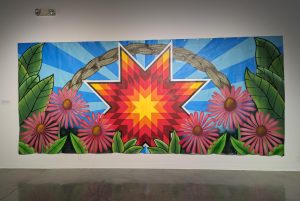
At the exhibition, TopBear is displaying an 8 foot by 16 foot canvas titled “The Great Mystery.” The multicolor mural represents a great creator putting people on Earth and providing people with everything they need.
“It’s really [about] having an understanding that we don’t know why we’re here, but we’re here because the creator put us here,” TopBear said. “It’s finding our way, finding our path.”
Another artist in the exhibition is Villiard, a multidisciplinary artist who grew up on the Fond du Lac Reservation in Cloquet, Minnesota. While she considered her upbringing to be geographically, socially and financially isolating, she used art as a coping mechanism and eventually had her first art show when she was 18 years old.
Villiard led the Chief Buffalo Memorial project, a series of murals in Duluth that honor Chief Buffalo, an Ojibwe leader whose actions helped preserve the rights and homelands of Ojibwe people. Villiard, along with three other artists who worked on the memorial murals, painted a series of four 8-foot panels that are displayed in the exhibition.
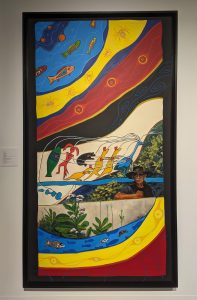
Villiard’s painting is titled “Portrait of Tuffy,” which depicts an older man, nicknamed “Tuffy,” standing in front of the first Chief Buffalo Memorial mural that started in 2019. Tuffy would visit the mural site almost every day while it was being painted, and Villiard thought her portrait would be a meaningful way of honoring his visits.
“I thought it would be a cool way of honoring him and his presence at the mural site as almost like part of the art and being the representative of the community aspect of the mural project as a whole,” Villiard said.
Villiard believes there is an exciting movement of Indigenous art happening in the Midwest, especially in Minnesota and Wisconsin. She thinks exhibitions like “Dreaming Our Futures” will make Indigenous peoples’ stories more visible and acknowledged.
“We come from a region of the country that has this really interesting Native history, some of it good, some of it bad,” Child said. “I think that we should tell those stories in every kind of medium and in every opportunity.”
“Dreaming Our Futures: Ojibwe and Očhéthi Šakówiŋ Artists and Knowledge Keepers” runs until March 16.


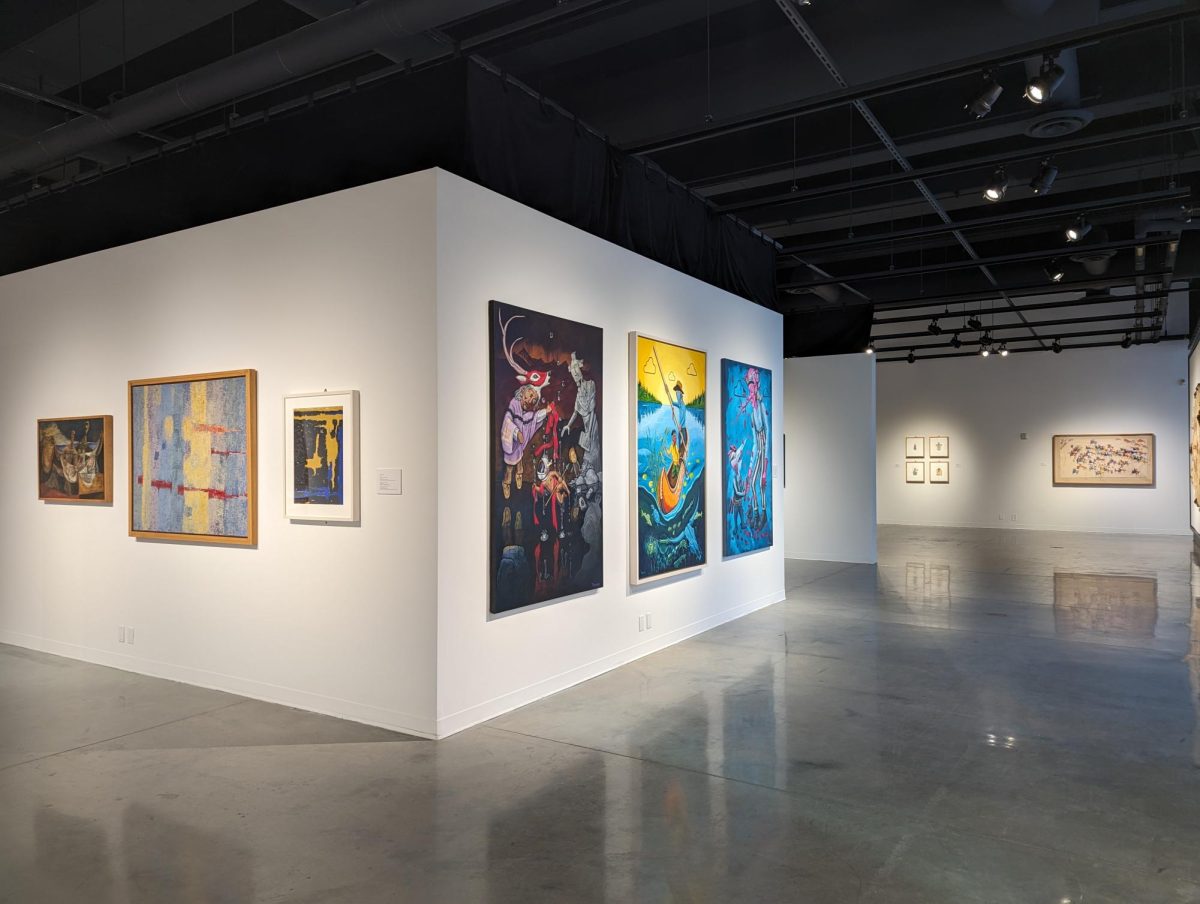

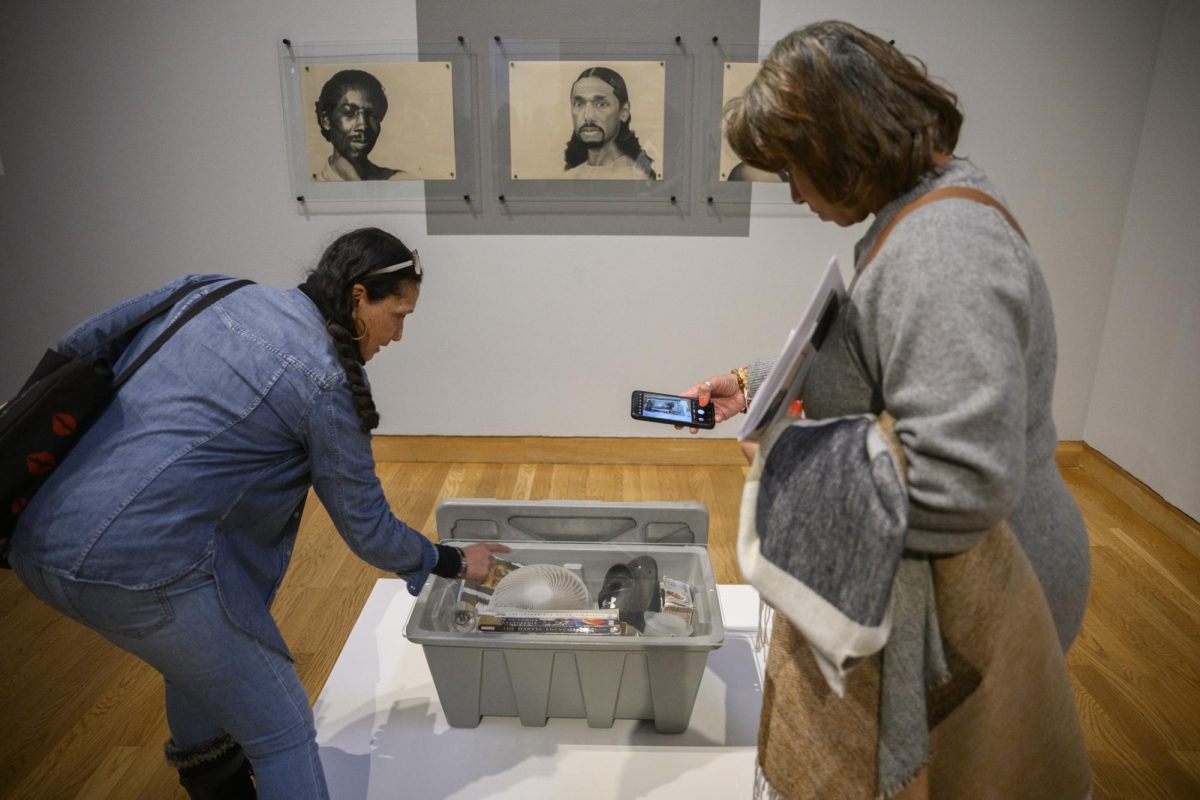
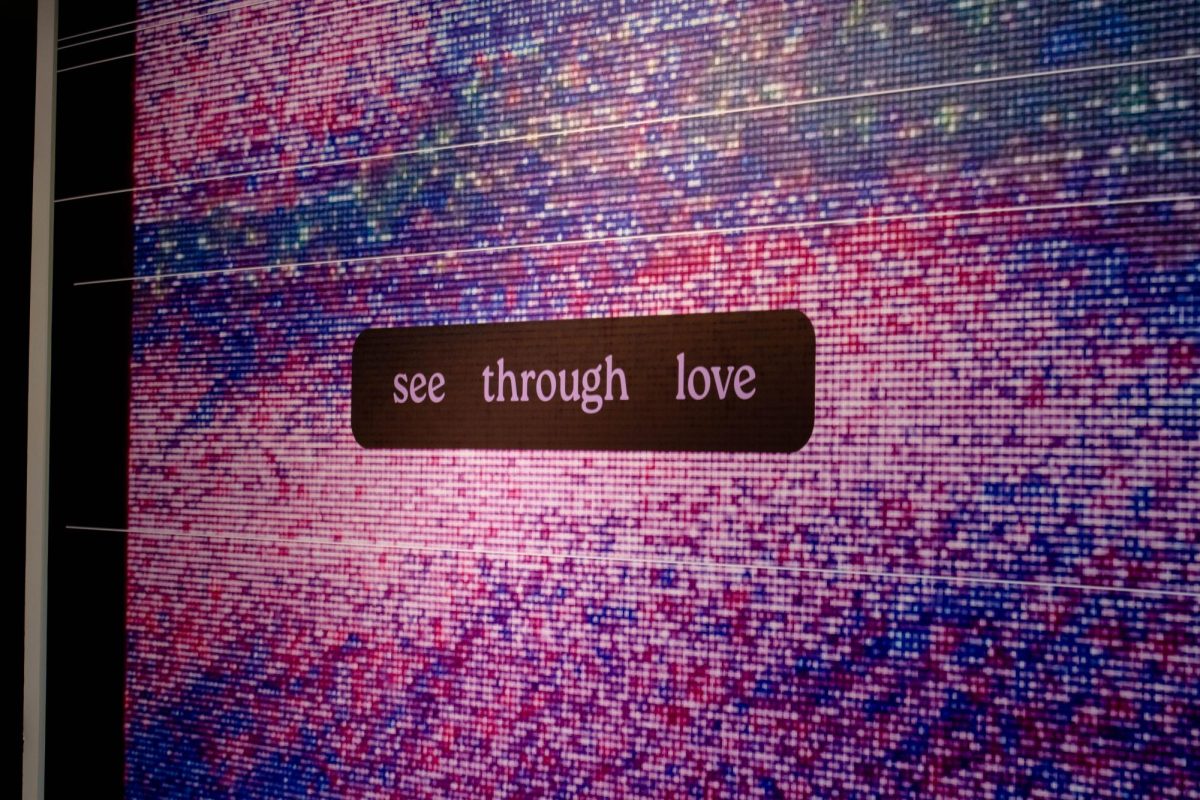
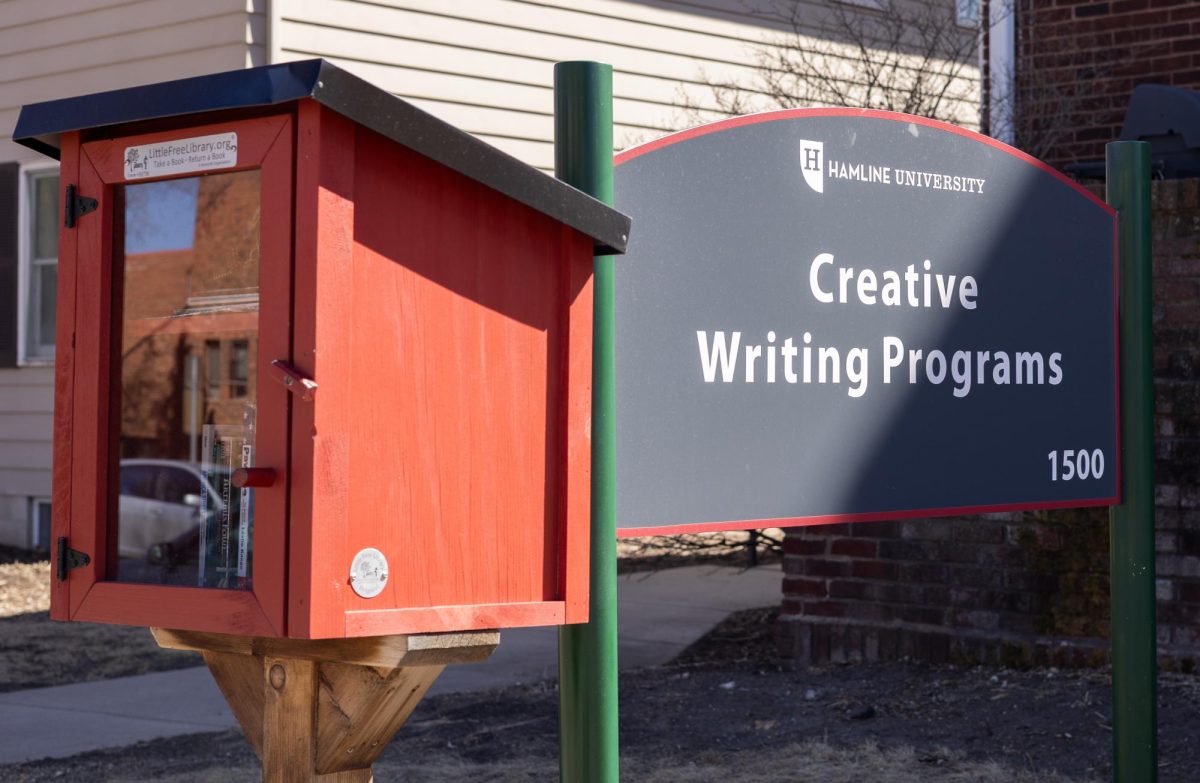
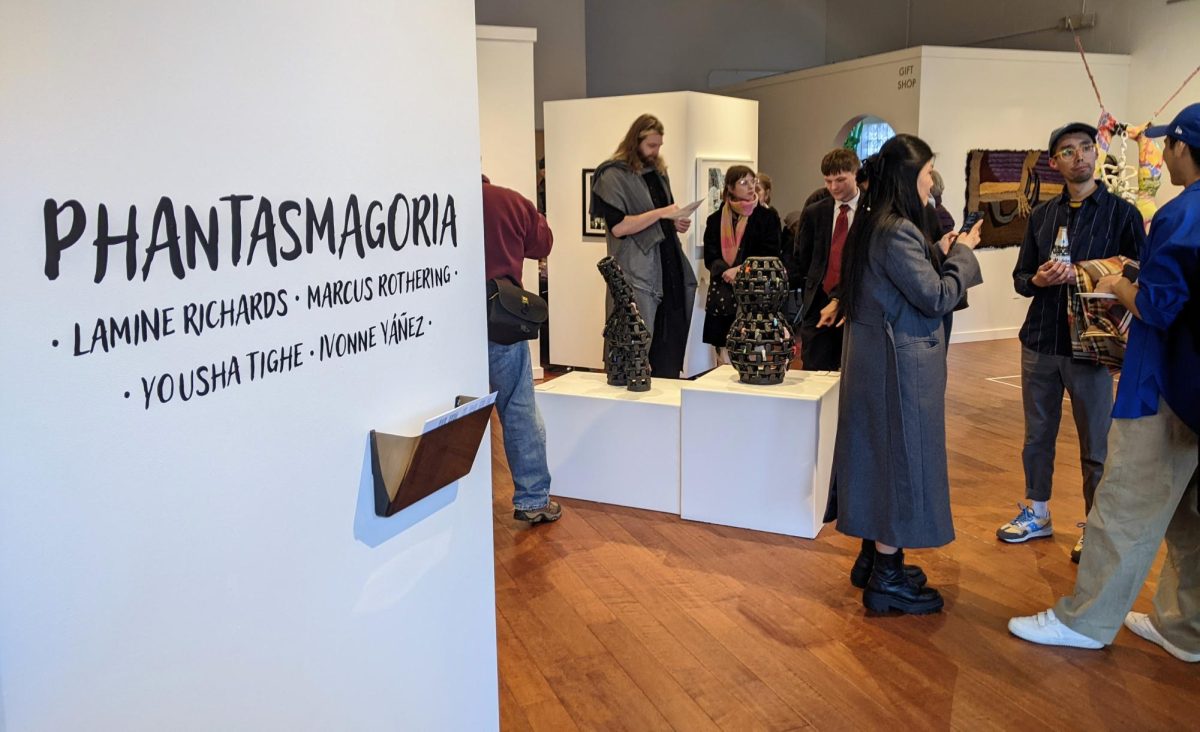
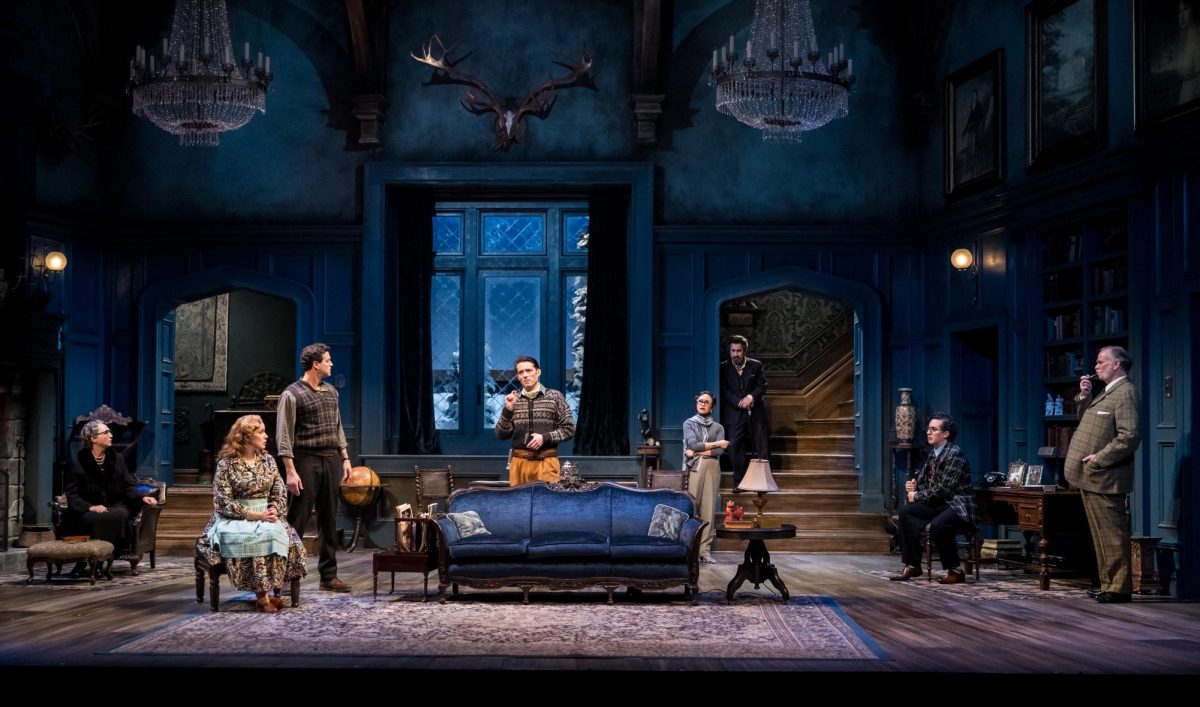




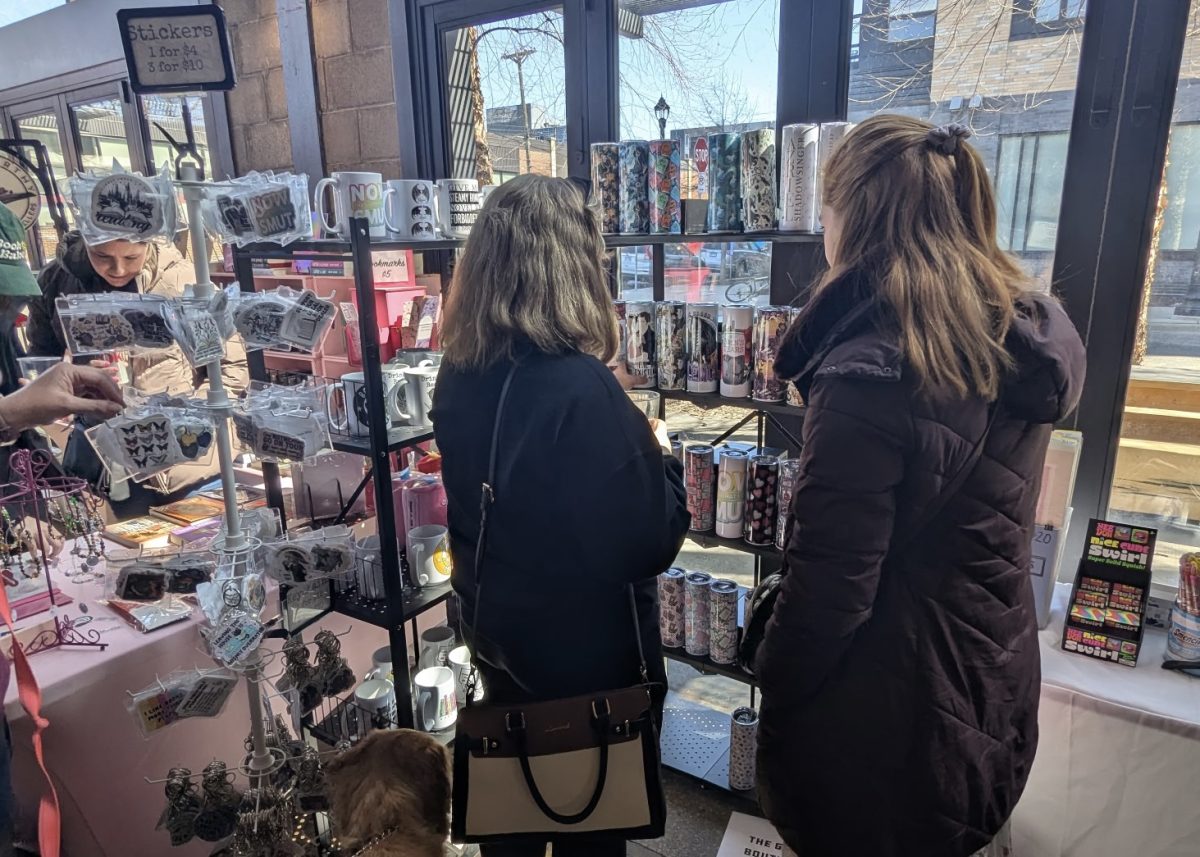
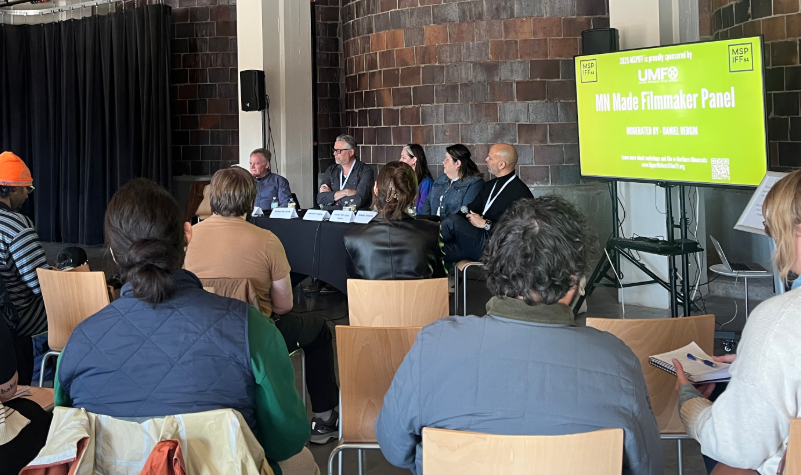
Georgia McClanahan
Jan 26, 2024 at 5:02 am
Love the title, wonderful way to look at artist’s messages to the world. that’s exactly it, not just the creativity of the individual but of the culture.